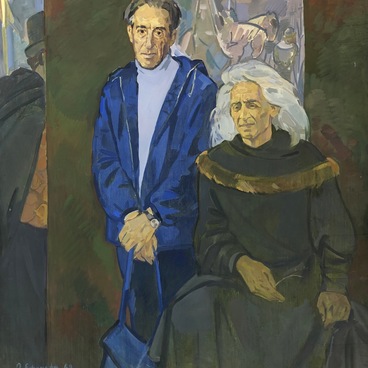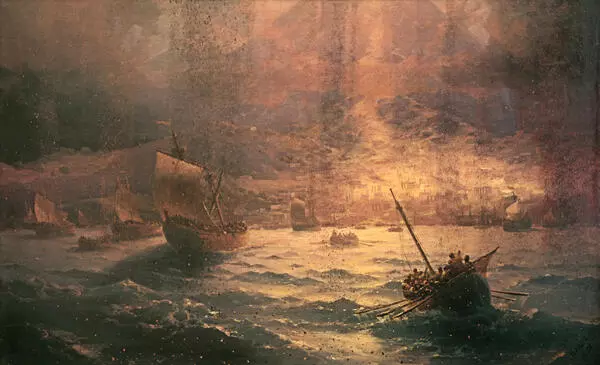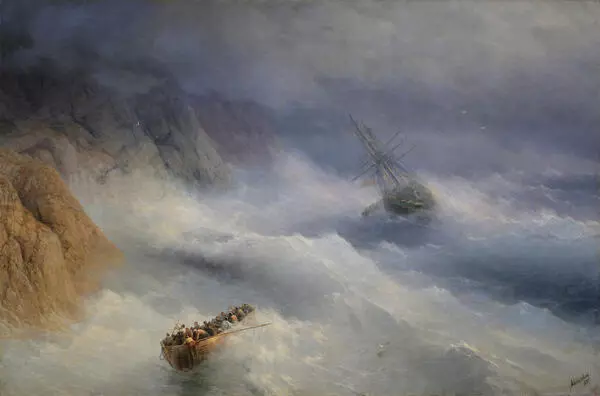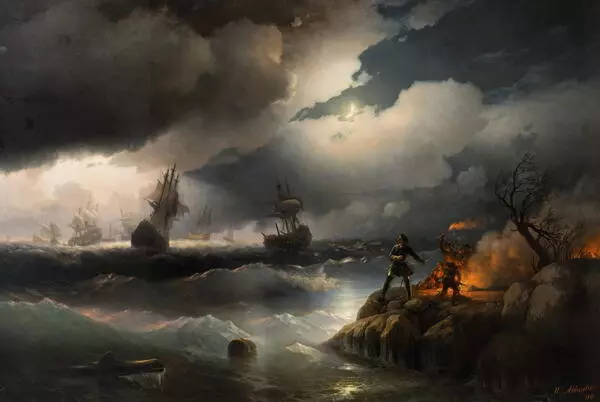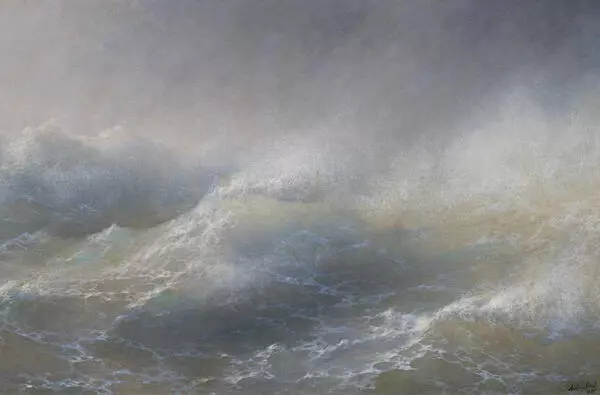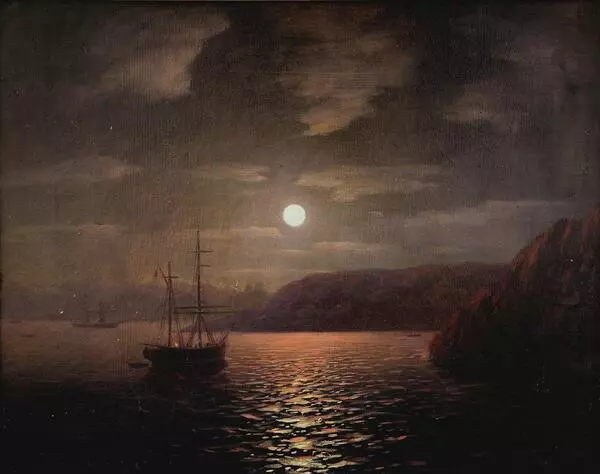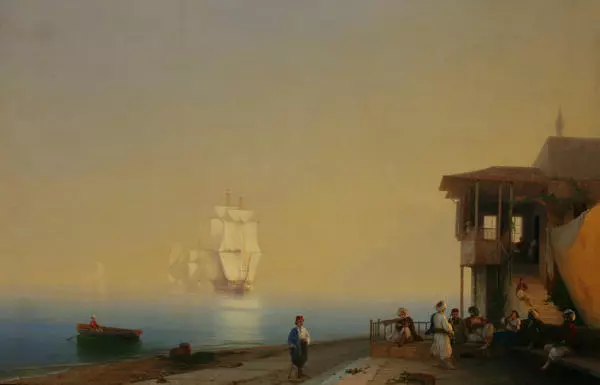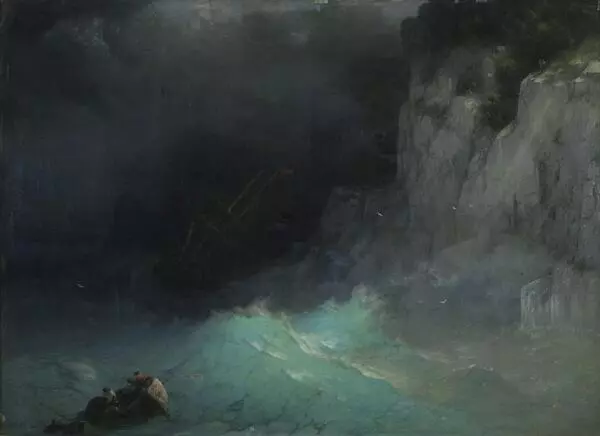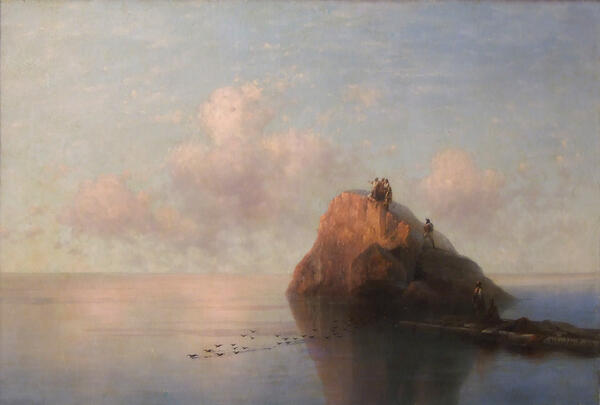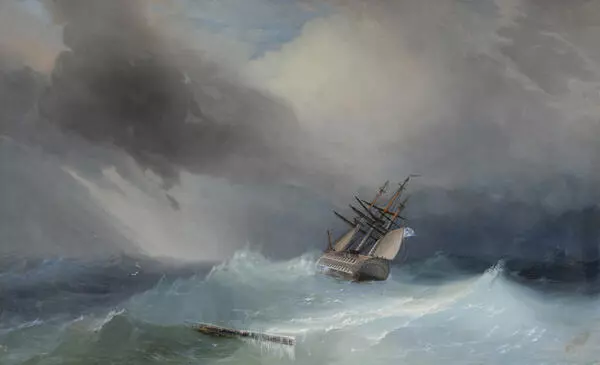Moonlit Night is ascribed to Konstantin Aivazovsky and is believed to be created in 1868. The painting features a big sailing ship resting at the Naples harbor in Italy, and a smaller boat in its vicinity. The artist left no clue as to why it has approached the ship: maybe the crew decided to come onshore, or maybe local merchants are rowing towards the ship to sell food to the sailors.
To the right of the dormant Naples, one can discern the Vesuvius. Smoke rising from its orifice is the only piece of landscape that keeps the viewer emotionally tense. Aivazovsky painted nighttime sea looking calm and quiet. The blurred moon glade adorns water surface adding perspective and volume to the whole picture. The ship is not a solitary object – a number of small sail boats are scattered along the shore. Big fluffy clouds frame the landscape like a theater curtain.
Fine art experts point to the picture’s color scheme. The painter managed to convey a complex artistic message with a low keyed and restrained palette where blue, emerald-green and black shades predominate. Yellow moonlight adds the desired degree of contrast. With relatively small dimensions the painting captures an amazingly vast scene.
Ivan Aivazovsky gained worldwide fame as early as the 1840’s with his popular marine and battle scenes. He preferred to work in his study painting by memory or from sketches. He often used the glaze technique, applying very thin layers of paint one on top of another to create a deep play of colors. Thus he was able to reproduce the enormous grandeur of a calm sea or a violent storm.
Aivazovsky fell in love with the sea when he was a child. He grew in the coastal city of Feodosia, where he enjoyed watching capricious waves and massive ships.
To the right of the dormant Naples, one can discern the Vesuvius. Smoke rising from its orifice is the only piece of landscape that keeps the viewer emotionally tense. Aivazovsky painted nighttime sea looking calm and quiet. The blurred moon glade adorns water surface adding perspective and volume to the whole picture. The ship is not a solitary object – a number of small sail boats are scattered along the shore. Big fluffy clouds frame the landscape like a theater curtain.
Fine art experts point to the picture’s color scheme. The painter managed to convey a complex artistic message with a low keyed and restrained palette where blue, emerald-green and black shades predominate. Yellow moonlight adds the desired degree of contrast. With relatively small dimensions the painting captures an amazingly vast scene.
Ivan Aivazovsky gained worldwide fame as early as the 1840’s with his popular marine and battle scenes. He preferred to work in his study painting by memory or from sketches. He often used the glaze technique, applying very thin layers of paint one on top of another to create a deep play of colors. Thus he was able to reproduce the enormous grandeur of a calm sea or a violent storm.
Aivazovsky fell in love with the sea when he was a child. He grew in the coastal city of Feodosia, where he enjoyed watching capricious waves and massive ships.


